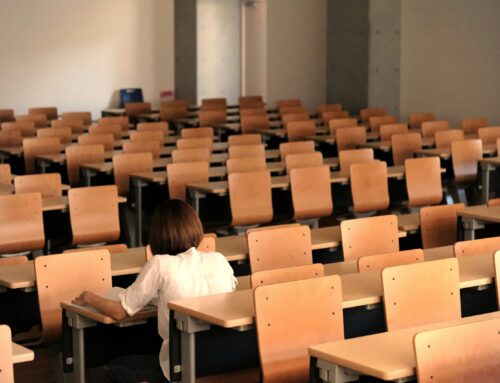 Children across all age groups are struggling with reading—be it fourth graders who can barely sound out words, or incoming college freshmen who can’t finish their assigned readings. Reports have indicated that literacy rates have dropped significantly. Various factors have contributed to the crisis, with the pandemic exacerbating some of its effects. Let’s take a closer look at what data shows, what’s happening in schools, and how to address it.
Children across all age groups are struggling with reading—be it fourth graders who can barely sound out words, or incoming college freshmen who can’t finish their assigned readings. Reports have indicated that literacy rates have dropped significantly. Various factors have contributed to the crisis, with the pandemic exacerbating some of its effects. Let’s take a closer look at what data shows, what’s happening in schools, and how to address it.
A concerning report from the Senate Committee on Health, Education, Labor & Pensions (HELP) was recently released, which drew attention to numbers gathered by the National Assessment of Educational Progress (NAEP). The report highlighted a concerning statistic, showing that “two-thirds of America’s fourth and eighth graders are not proficient in reading.”[1] Many professionals have been hesitant to call it a literacy crisis, but the data strongly suggests there is one. The worry over literacy may feel new and heightened because of the pandemic, but literacy rates in young children had been falling steadily since before then.
Though, the instability of 2020 definitely sped up that decline.[2] Reading scores have hit 20- and 30-year lows for fourth, eighth, and twelfth graders—meaning students who are supposed to be “college ready” are decidedly not.[1] Other helpful measurements like standardized tests for college entry, mainly the SAT and ACT, are also trending downward, where in 2024, the College Board released that the average score had hit 32, which is the lowest it has been in over 30 years and “the sixth consecutive year of declines.”[1] This consistent downward trend signifies a growing problem in education that has the potential to have consequences beyond poor college readiness.
Reading, for one, is the gateway to learning pretty much anything and everything. A student’s inability to read and comprehend words, sentences, and paragraphs will directly impact their learning of subjects—mathematics, science, and even digital literacy—as well as their ability to get a job. Mathematics requires the understanding of specific vocabulary, theories, and language to explain, discuss, and defend your work. For science, following written instructions to replicate results is only one small facet of the necessity of reading comprehension. Reading is simply a given in all subjects. And, as technology advances, it’s indispensable to have some level of digital literacy, especially as we embrace AI.[1] Illiteracy places students at a higher chance of not finishing high school, and those who manage to graduate will have a hard time in higher education and the workforce.[3]
But why are children not learning how to read?
Research points to various factors that contribute to less than adequate conditions that inhibit learning for young children. Chronic absenteeism and a lack of discipline have been found to have a role.[1] Students need to be present to learn and must have some level of self discipline. The ability to follow instruction to make the best out of lessons is crucial within school environments. Reports of behavioral issues that impede classroom management and learning have risen since the pandemic.
Behavioral and attention issues aren’t the end all be all for this decline. According to HELP, nearly 75% of elementary schools are using outdated teaching methods for reading.[1] These methods focus a lot more on memorizing the shape of words with very little emphasis on phonics. As a result, when students are confronted with a new word while reading, they have a much harder time trying to piece meaning or pronunciation together as they are unable to extrapolate previously learned principles. The lack of training in “evidence-based reading instruction” for teachers, in addition to the teaching shortage and under-funded schools, is also part of the challenge.[4] The programs and institutions that are supposed to prime teachers to effectively get their students to learn are not doing very well, since many still choose to teach the previously summarized, thus proven an “ineffective” balanced literacy method.[4] HELP also suggests that some teachers and districts are resistant to changing their teaching methods, which then negatively impacts students.[1]
There are other systemic issues that play a role. The continuous emphasis on banning books is part of the problem as it limits representation for many communities, placing a strain on librarians and teachers alike who now have to worry about losing their job over books with “diversity.”[4] Budget issues and the scarcity of resources affect literacy rates, particularly for students from minority groups whose communities and schools are already under-funded.[5]
Another culprit is the No Child Left Behind policy, which restricts how much learning can be done within any given classroom and allows for students to move up grades despite poor performance on benchmark exams. The policy has made students who wouldn’t have fallen behind to do so, while effectively barring those who do need the extra support and reinforcement from accessing it. Additionally, it shifted the emphasis to “learning for the test” and simplifying curriculums rather than boosting learning overall.[6]
High stress, a youth mental health crisis, and the collapse of casual reading have also been contributing external factors.[7] These are the result of various reasons, which can range from unstable home life to simply needing extra support and not receiving it. Students are not seeking out or engaging with literature outside of classroom environments, which is why parental involvement is necessary to reverse the crisis.
So, how do we fix this?
It is crucial to address this crisis as early as possible, as a generation with low literacy can effectively slow down societal progress, making the United States less competitive on a global scale.[1] There are some ways to combat illiteracy in both early learning and in adults. For young children, employing a “science of reading” model may be the most helpful. Mississippi integrated this model into their learning, which serves to emphasize phonics and the decoding of words. This proved to be effective as they jumped rank in education from 50 to 21.[8] Such is important for this discussion because if a rather small systemic change in the way something is taught made that much of an impact, imagine how effective increases in funding, additional teacher training, and other types of support that extend to outside the classroom could have.
Making available resources like after school or weekend tutoring available and free for students is another option that some districts have implemented to stop the decline in literacy.[8] Additionally, hiring more professionals, providing funding for training and programs that promote literacy and reading, as well as establishing support networks for students who may have a harder time due to a breadth of different disabilities is also crucial. For adults, special and tailored programs within communities and institutions can be wildly helpful in bridging this learning gap while still understanding that adults have different time commitments from children. The important thing to remember is that literacy can be learned at any age, so adults who haven’t yet are capable of doing so.
Last, but certainly not least, creating a culture of reading for children and adults alike is essential to cultivate their interest in words and enhance their ability to absorb new language as they grow.
PSG
Publishing Solutions Group is committed to delivering products and services that address the evolving needs of educators and students. Considering the growing literacy crisis, our mission to provide exceptional content becomes even more vital. We aim to empower educators with the tools they need to enhance literacy.
[1] https://www.help.senate.gov/imo/media/doc/literacy_report.pdf
[2] https://seattlemedium.com/americas-literacy-crisis/
[3] https://lhsepic.com/45513/in-depth/the-silent-epidemic-of-falling-literacy-rates/
[4] https://edtrust.org/blog/the-literacy-crisis-in-the-u-s-is-deeply-concerning-and-totally-preventable/
[5] https://www.forbes.com/councils/forbesbusinesscouncil/2024/03/25/addressing-the-literacy-crisis-a-call-to-action-for-district-leaders/
[6] https://edpolicy.stanford.edu/library/blog/873.html#:~:text=Critics%20claim%20that%20the%20law’s,schools%20and%20harmed%20special%20education
[7] https://thehill.com/homenews/education/4093843-reading-for-fun-plunges-to-crisis-level-for-us-students/
[8] https://abcnews.go.com/Politics/millions-american-kids-struggle-read-states-address/story?id=102934286
Image free to use under the Unsplash license.




